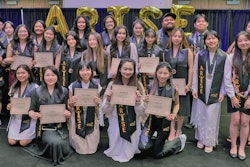Much has been made about recent Census reports highlighting the fact that White students are no longer the numeric majority in U.S. public schools. Awareness of these changes is important, but statistics on students’ racial demographics tell only part of the story. Interviews with educators at a Southern California high school where more than 80 percent of the students are Asian Americans or Latinas/os reveal that how, even when Whites are a small percentage of students, whiteness still dominates.
As is the case in schools throughout the U.S., most of the educators at the school I refer to as SCHS are White. Three-quarters of the administrators and half of the teachers are White compared to more than 90 percent of the students who are of color. While race alone does not determine perspective, this racial gap between educators and students is glaring. It is a reflection of educational barriers, historical differences and varied immigration patterns. This gap also hinders students’ access to racially diverse role models and approaches.
Despite the prevalence of White educators, their racial backgrounds were basically ignored during the interviews. Many spoke openly, comfortably and with great detail about their perceptions of Asian Americans and Latinas/os, but they were suddenly silent when asked about their own racial identities. Several even confessed that they never thought about the significance of their backgrounds. This was especially the case for older White teachers and administrators raised in predominantly White communities. Some even got defensive; they turned off the tape recorder, looked confused or emphasized how they are just “American.” Some have been taught to think about race only in relationship to people of color and not in relationship to themselves.
Whiteness is the assumed norm, and at SCHS Asian Americans and Latinas/os are marked as different. Not acknowledging their racialized backgrounds makes it easier for White educators to ignore their racial privileges and the legacy of racism in the U.S.
When White educators described students, the general overlooking of their own racial backgrounds relative to the hypervisibility of groups of color was stark. With frequent generalizations such as “Asians really value education” and “Latinos seem less caring,” many of their comments reinforced uni-dimensional and homogenized characterizations of these two pan-ethnic groups. They tended to reinforce cultural deficiency views attributing students’ educational outcomes to supposed group traits. Within-group heterogeneity and class differences between the primarily middle-class Chinese-American and working-class Mexican-American students at the school were ignored.
In contrast, they described the much smaller percentage of White students at the school in complex and nuanced ways. Their identities and ways of being were perceived as flexible and undefinable in comparison to Asian Americans and Latinas/os who were pigeonholed. These unequal characterizations privilege White students and hurt students of color, since White students are more likely to be seen as individuals and not as a stereotype. The predominantly White educators appeared more attuned to within-group heterogeneity among Whites and less so for students of color.
Many educators were also silent on the school culture and course curriculum. Although many of the students at SCHS are bilingual and have recent immigrant connections, the wealth of their family histories and experiences are ignored. Nationally, the histories, experiences and perspectives of groups of color are almost absent in textbooks and classroom lessons, providing students with incomplete and inaccurate information. This invisibility further marginalizes students of color and maintains White hegemony.
Overlooking or downplaying the institutionalization of whiteness and the privileging of Whites keeps inequality intact. If unequal histories, systems and practices are ignored, they cannot be changed.
For those of us in California, it is not news that White students are not the majority in schools. Instead, such reporting comes across as alarmist. It feeds fears about the growth of students of color. Going into our schools and looking at the patterns behind the numbers is more revealing. Even when White students are not the numerical majority, if left unaddressed, White privilege and racial inequities will not fade.
Gilda L. Ochoa is author of “Academic Profiling: Latinos, Asian Americans and the Achievement Gap” and professor of sociology and Chicana/o-Latina/o studies at Pomona College in Claremont, Calif. This article first appeared in the Inland Valley Daily Bulletin.


















